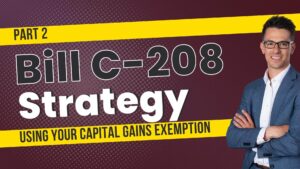[vc_row][vc_column][vc_video link=”https://youtu.be/nZNMGRdvkVM” css=”.vc_custom_1650377283130{padding-top: 20px !important;padding-bottom: 20px !important;}”][vc_column_text css=”.vc_custom_1651074583935{padding-top: 20px !important;padding-bottom: 20px !important;}”]
Video Transcript
Today I’m going to talk about a Margin Account and how it recently helped one of my clients who was in a tough spot.
Before we get started, this strategy is not suitable for everyone, please talk to a professional before implementing.
Last week, a client needed $200,000 immediately because he was buying a piece of property.
He had talked to the bank. The bank was going to lend him some money, but the loan wasn’t going to come in on time. The first problem that occurs due to this loan not arriving on time is having to withdraw money from his investments.
First Problem: Selling Investments at a Low
Let’s look at how his portfolio has been performing.
We had a great run but as you know the start of 2022 has been a bit rough for investments. His portfolio is down from where it was at the start of the year.
By taking money out of his portfolio today, he’d be selling at somewhat of a low. He has made money since he started but recently markets are down, so he’d be selling at a low.
Second Problem: Taxes
The second problem he was going to run into was taxes.
He has $100,000 in his TFSA which he could withdraw tax-free. $500,000 in RRSPs, which is 100% taxable. This would not be a wise place to withdraw from, and lastly, he has $1,000,000 in a non-registered account. If he took out $100,000 from the TFSA, he would need to withdraw another $100,000 from the non-registered account to net him $200,000.
By taking out a $100,000 from his non-registered account, he would have to pay about $10,000 in taxes.
In this scenario, this client was going to be forced to sell when markets are down, and it would end up costing about $10,000 in taxes since he had to withdraw $100,000 from his non-registered account.
Margin Account to the Rescue
Here is where the margin account came to the rescue.
A margin account is an account that allows you to borrow against the investments that are held inside the account. Let’s go over an example.
To keep it simple, say you have $100 of stock inside your margin account. Now if this is a blue-chip stock, you’re able to borrow against about 70% of its value. That would equal $70, which can go straight to your bank account.
What you have is a margin of $70 against your $100 investment. Your investment is still invested, you haven’t sold it, you have just borrowed against it.
If the stock goes up to $110, you are now able to borrow $77 against this stock. 70% of $110 is $77.
If your stock goes down to $90, then you will only be able to borrow $63 against this position.70% of $90 is $63.
If this were to happen, you would have a margin call. The difference between the $70 borrowed and the new 70% of $90 is $63. In this case, $7 would have to be paid right away.
You would have to take $7 from your bank account and put it back into your margin account to put the account back onside. That is what a margin call is. It occurs when the value of the asset that you’ve borrowed against has dropped and your loan is worth more than what is allowed.
How the Margin Account Helped
Back to our initial example. This client needed $200,000 and he has $1,000,000 in his non-registered account. This non-registered account was also a margin account. He can borrow $700,000 against his $1,000,000. Now, this client did not need $700,000, he only needed $200,000.
He borrowed $200,000 from his margin account. The $1,000,000 of investments in his account were not sold. He did not touch his RRSPs. He didn’t touch his TFSA. He simply borrowed against the investments that he had in his account.
He was nowhere near getting close to a margin call because he has $500,000 left worth of margin.
His loan come through a couple of weeks later and he simply paid back his loan in his margin account, and he was off to the races.
As you can see a margin account is very nice to have in situations like this because you’re able to get access to money very quickly. We were able to put this money in his bank account the next day, no questions asked, no paperwork.
With a margin account, you can borrow against your securities, and just like that, you get the money. You can do whatever you want with it.
You do not have to pay any taxes when you borrow money on margin. So, in this case, he didn’t pay taxes and he didn’t sell while his portfolio was down.
Margin accounts give you flexibility if you ever run into any issues where you need money quickly. You can borrow against your portfolio and then pay it back.
As far as interest rates go on borrowed money from a margin account, they are roughly prime plus 1%, prime plus 2% depending on which bank you’re at. Not an unreasonable rate to get access to money very quickly.
If you have any questions about margin accounts, please don’t hesitate to reach out!
Important disclaimer for margin account holders:
You can lose more money than you have invested; You may have to deposit additional cash or securities in your account on short notice to cover market losses; You may be forced to sell some or all of your securities when falling stock prices reduce the value of your securities; Your brokerage firm may sell some or all of your securities without consulting you to pay off your margin loan; Your brokerage firm can increase its margin requirements at any time; You are not entitled to an extension of time on a margin call.
This strategy may not be suitable for everyone. The information transmitted is intended to provide general guidance on matters of interest for the personal use of the viewer who accepts full responsibility for its use and is not to be considered a definitive analysis of the law and factual situation of any particular individual or entity. As such, it should not be used as a substitute for consultation with a professional accounting, tax, legal or other professional advisor.[/vc_column_text][/vc_column][/vc_row]








